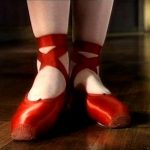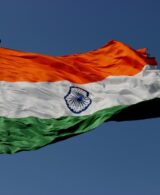Red Fort- The Republic Architectural Marvel
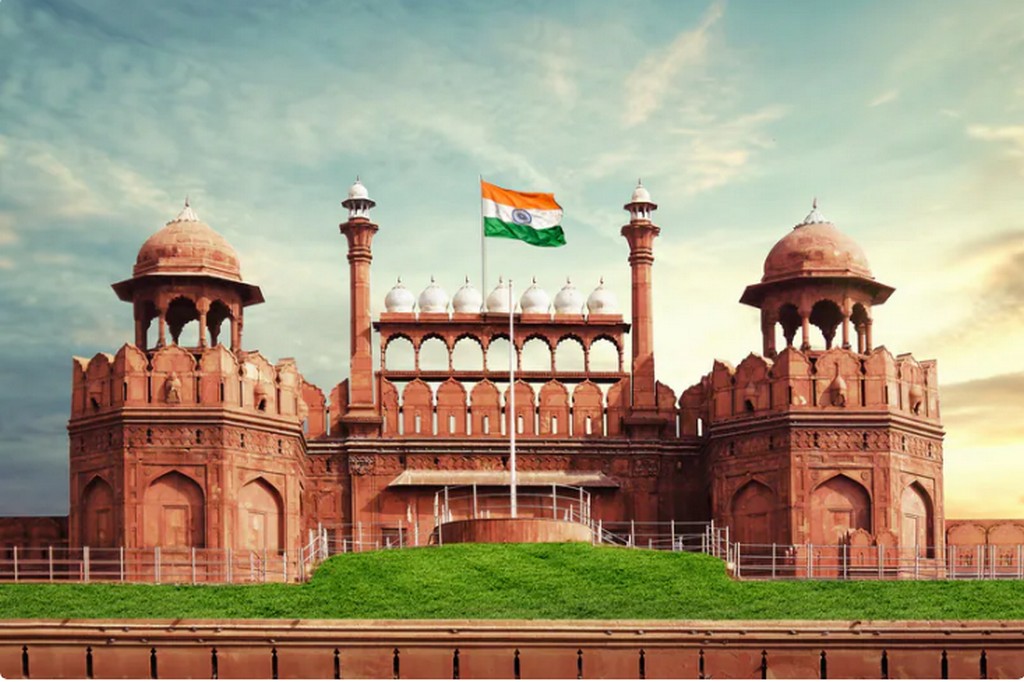
Red Fort- laal quila of New Delhi:
Red Fort located in the capital city of India New Delhi, is not just a historical monument rather it is the pride of the Indian Subcontinent. Red Fort has always been a part of our history, a part of our present and it will also be a part of our future as well. It symbolizes not just our History but resonates with the reason why we all stand together in front of our beloved Laal Quila under one flag with so much pride and honor. On Republic Day, the President of India unfurls the flag, commemorating the formal adoption of the Indian Constitution. India is gearing up to celebrate its 75th Republic Day on January 26, 2024, as the Parade starts from Rajpath and ends at the Red Fort.
History Of 26th January and The Red Fort:
It was on 26th January 1930, that Pandit Jawahar Lal Nehru unfurled the Indian Tricolor in Lahore for the first time and declared an independent Indian National Congress and after the partition in 1947, the flag was hoisted on the Red Fort.
The Indian Tricolor is hoisted by the President of India on Republic Day at the Kartavya Path and it is, undoubtedly, the most patriotic moment that anyone with vigorous support for the country can witness. As the President unfurls the flag, the National Anthem plays in the background. It is followed by the iconic 21 Gun Salute and the President’s Bodyguard’s National Salute and that marks the beginning of the celebrations. The Parade then starts and from the Rajpath and goes to the Red Fort.
Why does Red Fort have such significance for Republic Day?
1.The Red Fort Complex was built as the palace fort of Shahjahanabad – the new capital of the fifth Mughal Emperor of India, Shah Jahan. Named for its massive enclosing walls of red sandstone, it is adjacent to an older fort, the Salimgarh, built by Islam Shah Suri in 1546, with which it forms the Red Fort Complex.
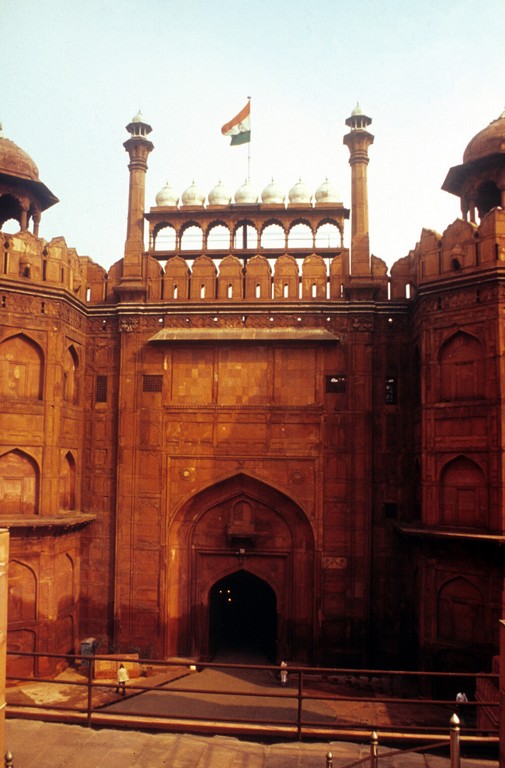
Source: UNESCO
2.The architecture of the Red Fort reflects a seamless fusion of Islamic, Persian, Timurid, and Hindu styles. Diwan-e-Khas, also known as the Shah Mahal, the Diwan-e-Aam, the Hall of Public Audience, and the Rang Mahal, also known as the Imtiyaz Mahal, are major attractions.
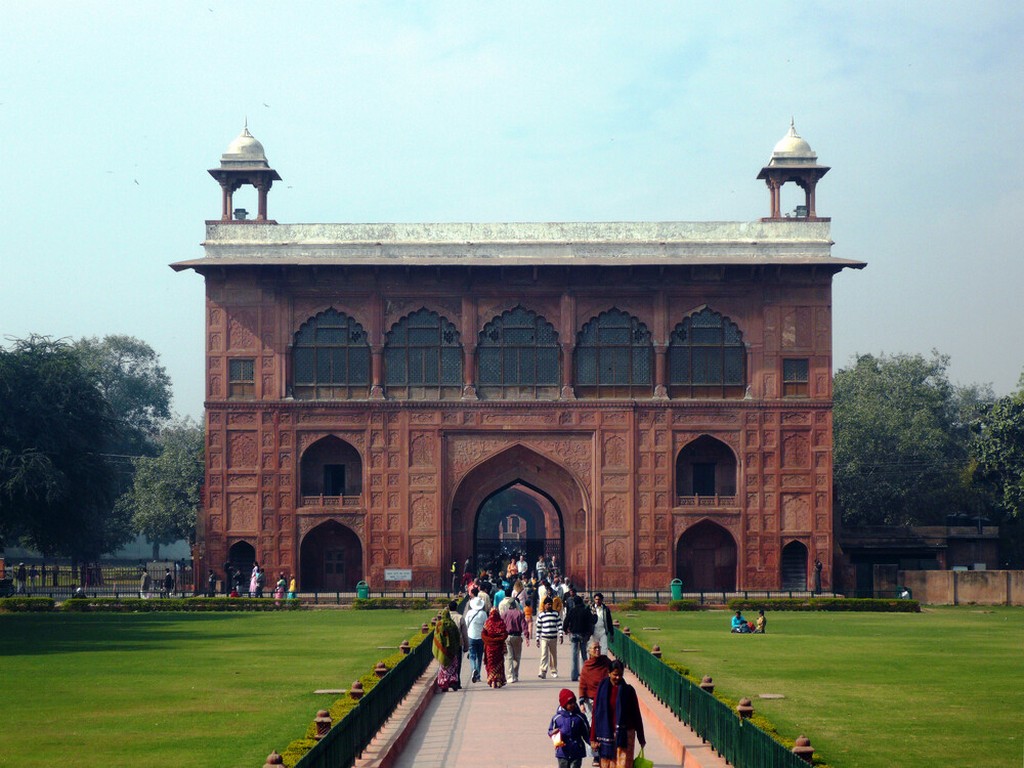
Source: UNESCO
3.The fort’s massive red sandstone walls, which stand 75 feet (23 meters) high, are enclosed in a complex of palaces and entertainment halls, projecting balconies, baths and indoor canals, and geometrical gardens, as well as an ornate mosque.
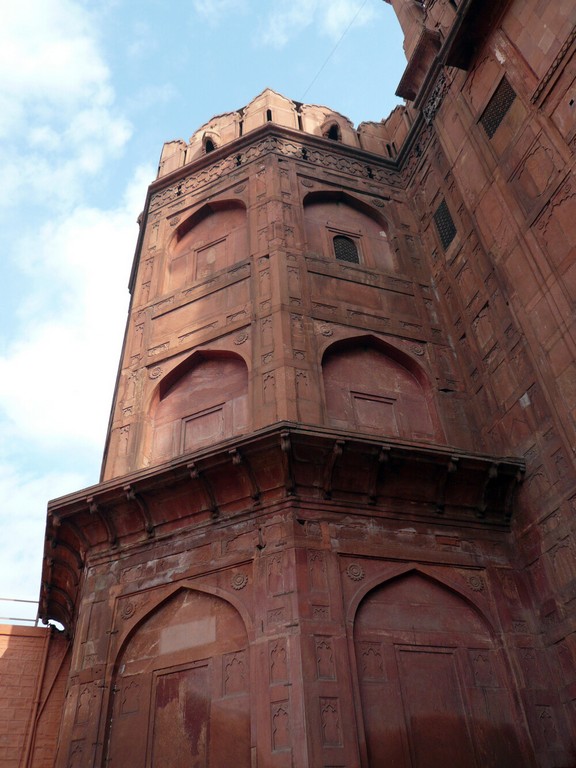
Source: UNESCO
4.The Red Fort’s innovative planning and architectural style, including the garden design, strongly influenced later buildings and gardens in Rajasthan, Delhi, Agra, and further afield.
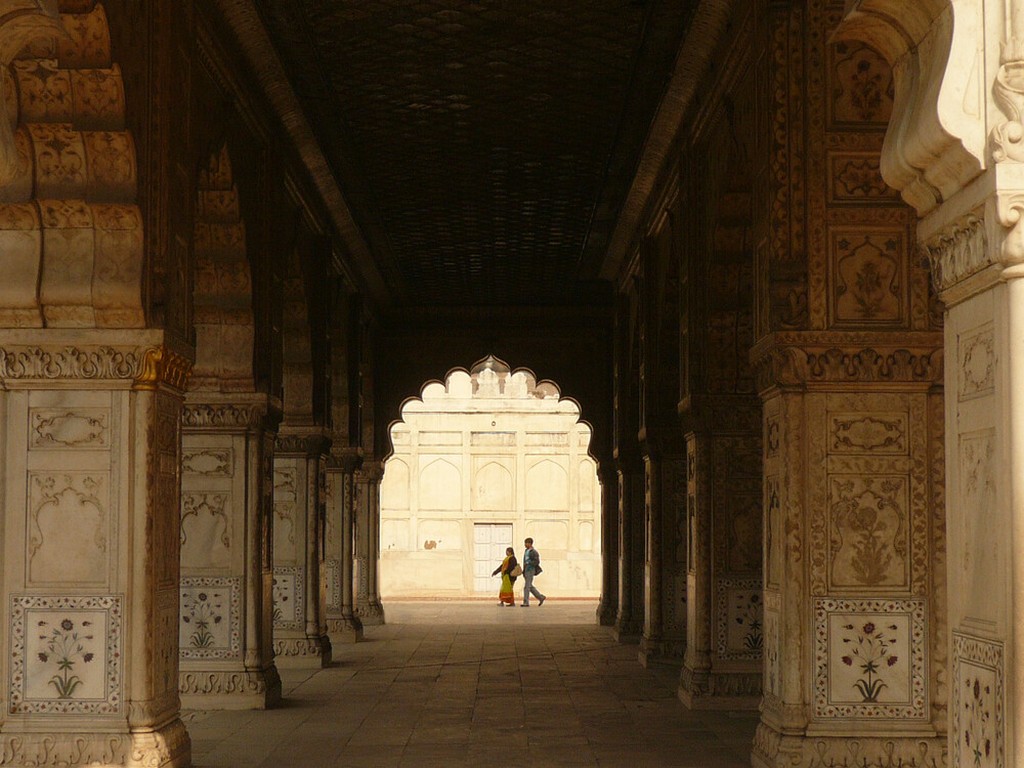
Source: UNESCO
5.The fort was called “Qila-e-Mubarak”, which can be translated to “The Blessed Fort”. It was built when Shah Jahan decided to shift his capital from Agra to Delhi in 1639. It took almost a decade for the fort to be built.
Source: UNESCO
6.Diwan-i-Aam – This is the huge pavilion for public royal spectators with a flamboyant throne-balcony (jharokha) reserved for the emperor. The site’s columns are decorated with gold and a gold and silver paling drew a line of demarcation between the throne and the viewers.
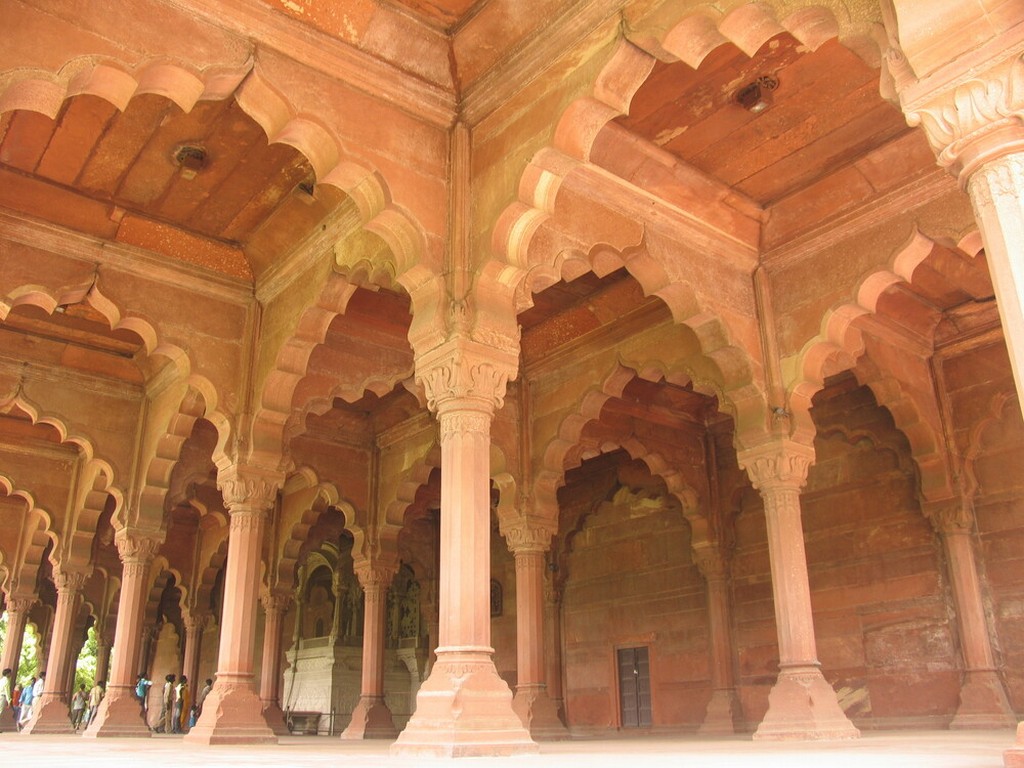 Source: namsteindiatrip
Source: namsteindiatrip
7.Diwan-I-Khas- It is a pavilion dressed in full marble, the pillars polished with floral sculpting, and the inlay work decorated with semi-precious stones.
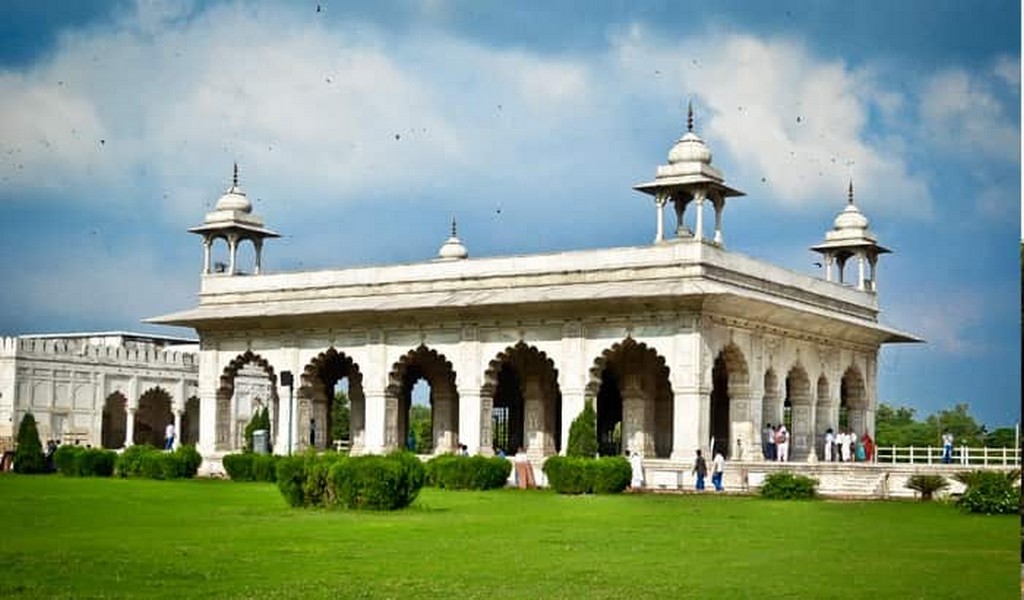
Source: namsteindiatrip
Conclusion:
The Red Fort was later used as a garrison during the British rule of India. Upon independence on August 15, 1947, India’s first prime minister Jawaharlal Nehru raised the Indian flag over the Red Fort, starting a tradition that is reenacted every year on Indian Independence Day. This ritual has helped cement the fort’s status as a national symbol of India. In 2007, it was declared a UNESCO World Heritage Site in honor of its representation of Indian architectural and cultural achievement and status as an important site.
The Red fort is visited by thousands of tourists every day. The fort welcomes them with its many attractions. One of the fascinating tourist attractions here is the light and music show held every evening here. The show is of one-hour duration and conducted in English and Hindi languages with a half an hour interval. It takes the audience through key historical events of Delhi, right from the time of Mahabharat and Pandavas to the years of British rule in India.
The Red Fort takes you through the times and eras of various Rajput and Mughal rulers and kings of India like Prithviraj Chauhan, Humayun, and Bahadur Shah Zafar. Chatta Chowk, a bazaar or a market inside the Fort is another attraction. The interior area of the Red Fort has many sections like Diwan-I-Khaas, Diwan-I-Aam, Khas Mahal, and Rang Mahal. Lahore Gate and Delhi Gate are the two gates of the Red Fort.
The Red Fort is not just a monument as announced earlier, it is a revelation for every generation who wants to know about the History of this nation. The architectural history of this fort is a treasure that no one can miss.
It is a platform for learning, exploring, and reviving when it comes to architectural study. The Red Fort is an open library for lovers and learners of archeology and interior design. Just a glimpse is enough for them to fall in love with the splendor of this fort and expand their boundaries of learning.
It is this kind of expansion we give at the JD Institute of Designing for every future aspirant. So why wait any longer, visit our website for more information and apply at https://www.jdinstitute.edu.in/ to become a part of exponential learning!







